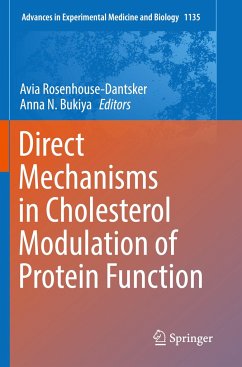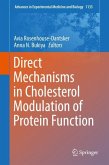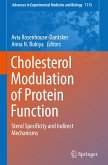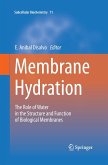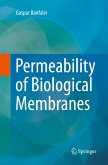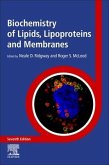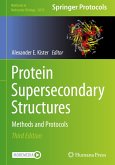In this book, renowned scientists describe how cholesterol interacts with various proteins. Recent progress made in the high-resolution visualization of cholesterol-protein interactions using crystallography and cryogenic electron microscopy has substantially advanced the knowledge of critical features. These features enable specific recognition of the cholesterol molecule by proteins, a process that was built on earlier studies using binding assays, computational modeling and site-directed mutagenesis.
Direct Mechanisms in Cholesterol Modulation of Protein Function offers comprehensive insights into the current understanding of cholesterol-driven modulation of protein function via direct sensing. Its nine chapters are organized into two distinct parts. In the first part, the chapters introduce the reader to the general characteristics of cholesterol binding sites in proteins. This part starts with a tour into common cholesterol recognition motifs, followed by an overview of the major classes of steroid-binding proteins. It then continues with two chapters that present a comprehensive analysis of molecular and structural characteristics of cholesterol binding sites in transmembrane and soluble protein domains. In the second part of the book, examples of cholesterol binding sites and consequences of specific cholesterol recognition for protein function are presented for G protein-coupled receptors, ion channels and cholesterol-transporting proteins.
The book is valuable for undergraduate and graduate students in biochemistry and nutrition, as well as basic science and medical researchers with a keen interest in the biophysical properties of cholesterol and physiological consequences of cholesterol presence in biological systems.
Direct Mechanisms in Cholesterol Modulation of Protein Function offers comprehensive insights into the current understanding of cholesterol-driven modulation of protein function via direct sensing. Its nine chapters are organized into two distinct parts. In the first part, the chapters introduce the reader to the general characteristics of cholesterol binding sites in proteins. This part starts with a tour into common cholesterol recognition motifs, followed by an overview of the major classes of steroid-binding proteins. It then continues with two chapters that present a comprehensive analysis of molecular and structural characteristics of cholesterol binding sites in transmembrane and soluble protein domains. In the second part of the book, examples of cholesterol binding sites and consequences of specific cholesterol recognition for protein function are presented for G protein-coupled receptors, ion channels and cholesterol-transporting proteins.
The book is valuable for undergraduate and graduate students in biochemistry and nutrition, as well as basic science and medical researchers with a keen interest in the biophysical properties of cholesterol and physiological consequences of cholesterol presence in biological systems.

